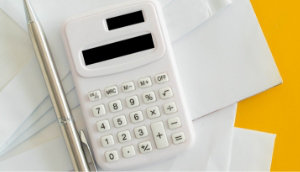Tracking Newer Data Sources for eDiscovery: GPS, Toll Transponders, and Beyond
-
Published on Apr 6, 2016
Despite their well-earned reputation for being luddites, most lawyers know by now that information relevant to a particular lawsuit often resides in email, text messages, and traditional social networks like Facebook. While such a “small step” for lawyers is certainly a positive, it also obscures the fact that there are many other, less obvious sources holding relevant electronic data. Many of these sources – including global positioning system (GPS) devices and electronic toll transponders – are often overlooked in discovery even though lawyers use them daily in their personal lives or practices. That such evidence often plays a decisive role in resolving legal disputes suggests that lawyers must continuously learn about technology or be rendered “ethically incompetent to handle certain litigation matters involving e-discovery.”
GPS Devices
Many lawyers know that data from GPS devices has been crucial in criminal investigations. Indeed, the Supreme Court’s noteworthy Jones v. United States decision from 2012 focused on the legality of the government’s use of a GPS device to track down and eventually arrest a notorious drug dealer.
What many lawyers apparently do not know, however, is that GPS data may also have tremendous significance in civil litigation. Beyond the obvious realms of personal injury, family law, and worker compensation, GPS data may be relevant in more traditional business litigation such as employment actions and trade secret disputes. It can be used to impeach a witness or, as Chris Dale has written, to show collusion between witnesses.
For example, in the employment context, GPS data enabled an employer to win summary judgment on a wrongful termination claim brought by a former employee. In Smith v. Pacific Bell Telephone Company, the employer used GPS data to justify its termination of the employee for violating company policy that resulted in the theft of a company vehicle. Contrary to the employee’s representation that he had locked the vehicle after turning the engine off, data from a GPS device confirmed that the car was in fact idling when it was stolen.
Despite the significance of the GPS device in Smith, lawyers often know very little regarding GPS technology. Indeed, in the many CLE programs that I have taught on lawyer competence, few attorneys seem to be aware that their smartphones contain GPS technology that (when enabled) generates an electronic dossier reflecting every move they make. By following the suggestions of experts such as Craig Ball and Mr. Dale and experimenting with the “Location Services” feature on their smartphones, lawyers can become more familiar with this powerful functionality. By so doing, they may begin to understand its potential usefulness in appropriate cases.
Electronic Toll Transponders
Electronic toll transponders such as E-Z Pass and FasTrak are replete with potentially relevant information for both criminal and civil matters. As with GPS devices, criminal cases have grabbed the headlines regarding the use of information gathered by toll transponders. Because those transponders record the precise date and time when a vehicle has passed a location such as a toll gate or a traffic monitoring point, transponder data has been used to incriminate or exonerate those accused of crimes such as rape and murder.
In like manner, toll records have been used for years by family law attorneys to determine asset ownership, ascertain spousal earning capacity, and to otherwise detect duplicitous conduct. Because “you can put together anybody’s life every day” with the help of such records, transponder data could also prove invaluable in business litigation. Just as with GPS devices, toll data could be effective in employment matters where a worker has been terminated for allegedly “stealing time” from the company. Such data could also have an impact in commercial contract disputes, fraud, and unfair competition claims where the date, time, and location of certain acts may be crucial to the outcome of the case.
Staying Current with Technology
GPS and toll transponder data are only a couple of the increasing number of sources of electronic information that lawyers should consider as they pursue discovery. As detailed in her recent, insightful article on digital evidence, business litigation attorney Gail Gottehrer discusses how telematics devices, wearable technology, dashboard cameras, red light cameras, and event data recorders may also contain pertinent information for eDiscovery. Beyond those sources are mobile chat applications and consumer-grade cloud applications, which are frequently rife with relevant information for business disputes.
All of which highlights the need for lawyers to stay current with technology. Because while many lawyers now have an ethical duty to understand “the benefits and risks associated with relevant technology,” the practical purpose for doing so – prevailing in litigation – provides a much greater incentive.


